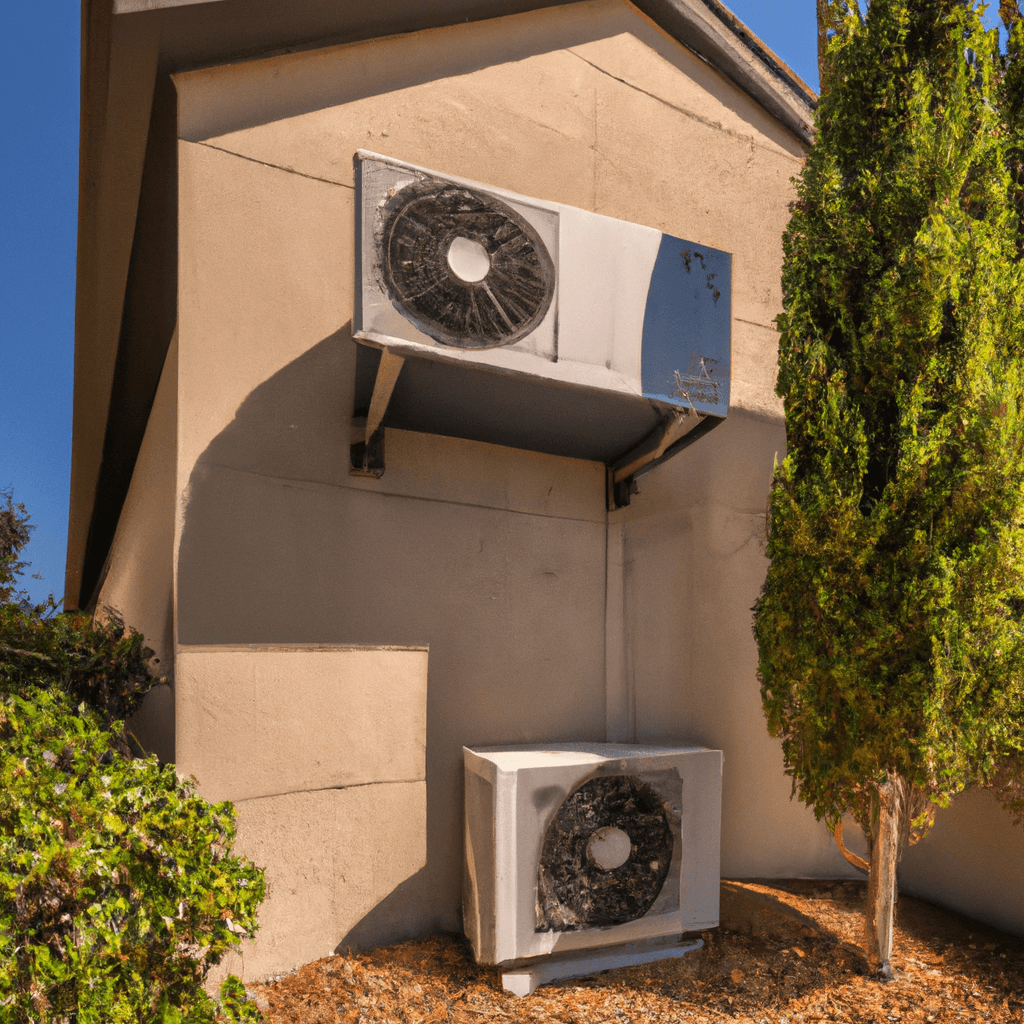Residential AC Installation – Tips and Advice
If you are looking for advice on how to install your residential air conditioning system, this article is for you. In it, we’ll take a look at several important considerations when installing an air conditioning system and offer tips that can help you ensure a successful installation.
Determine Necessary Components
The first step when installing your air conditioning system is to evaluate the space and determine the components necessary to achieve a comfortable environment. Many air conditioning units are designed with specific requirements, including filters, insulation, vents, and condensate drains—all of which must meet or exceed any necessary building codes. To ensure your installation meets all of your desired goals, be sure to consult with a professional if you aren’t sure of your capabilities.
Create a Plan
Before you can begin installing your air conditioning system, you’ll need a plan. As part of your plan, you’ll need to identify exactly what components will be necessary and where they will be installed. To simplify this process, consider developing a hand-drawn diagram of the space and sketching out the placement of the components.
Installation Process
When it comes time to begin installing the air conditioning system, you’ll have to determine which parts can be installed yourself and which will require professional assistance. Generally, if the unit has not been previously connected, you should have a professional assist with the wiring and other elements of the installation. This will help avoid any potential surprises and ensure your unit meets all safety requirements.
Troubleshooting
Even the most experienced installers may encounter problems during the installation process. If this happens to you, don’t feel discouraged or alone—it’s quite common. Make sure that you have all the necessary tools on hand to troubleshoot any issues and get your system up and running.
Preparing Your Home
Once the installation is complete and the air conditioning system is running, it’s important that you take the necessary steps to prepare the environment. Install appropriate window coverings to reduce unobstructed sun exposure, seal any cracks or gaps in the walls or framing, and check the insulation and weatherstripping around windows and doors—all of which will help reduce your energy bills.
Adding Regular Maintenance
To ensure that your air conditioning system continues running properly, and to avoid costly repairs, it’s important to include regular maintenance as part of your overall plan. Every six months, have a professional check the unit for signs of damage, check the connections and wiring, and ensure that all parts of the system are in working order. In addition, be sure to keep the area around the unit clean, free of debris, and properly insulated so that your system runs efficiently.
Final Thoughts
Installing a residential air conditioning system requires careful planning and attention to detail. While the process is intricate and requires a certain level of skill, it is possible to do it yourself. However, if your knowledge and experience is limited, or if you’re uncertain how to proceed, it’s best to leave the job to a certified professional.
At Local Reliable Appliance Repair, our experienced professionals provide prompt, reliable service when you need it most. We offer a wide range of services, from installation to maintenance, and provide excellent customer service. So, if you’re looking for assistance when it comes to your residential air conditioning installation, contact us today at (866) 311-8590. We’re ready to provide you with the highest quality service and get your unit up and running in no time.



Residential AC Installation: Preventive Action to Avoid Issues
Installing residential air conditioning (AC) systems can be an intimidating task, but with careful planning and proper maintenance, it’s one that doesn’t have to be a source of worry. Taking some precautionary steps before and during a Residential AC Installation is a prudent and necessary part of the process. To ensure a successful outcome, here are some essential recommendations from manufacturers, local appliance companies, and HVAC technicians.
Research AC Unit Compatibility
Before purchasing an AC unit, verify that it is compatible with the home’s structure and electrical wiring system. Be sure to look at reviews, as well as consult with specialists who can evaluate compatibility with the existing wiring and climate control requirements for the home.
Have a Place Ready for Installation
Prepare the location for the AC unit before mounting it. Be sure that the workspace is free from debris, including dirt, leaves, and other dirt particles. It should also be level and wide enough for the installation to occur. Creating a workspace that allows for easy access to the unit and its components can greatly reduce the risk of any problems occurring during the installation process.
Follow Instructions Precisely
When installing an AC unit, it’s essential to follow the manufacturer’s instructions carefully. Each model has specific components and steps that have to be done in the appropriate order. Don’t be afraid to ask questions if something isn’t clear; it’s better to take a few extra moments to make sure that everything is done right than rush through and end up with a unit that doesn’t work properly.
Test the System After Installation
After the installation is complete, make sure to switch on the unit and test its functionality. Look for any signs of strain or malfunction in the electrical circuit, such as smoke, strange smells, or bright sparks. If any of these occur, contact an electrician or HVAC technician immediately to check for any potential problems.
Schedule Regular Maintenance Checks
To keep the AC unit functioning at its best, it is important to schedule regular maintenance checks. These checks should include the replacement of any worn-out filters, cleaning the outdoor unit of debris, and inspecting for signs of wear in the system’s components. For AC units with digital thermostats, ensure that these are properly calibrated as well.
Inspect the Unit Regularly
It’s also a smart idea to inspect the AC unit visually once or twice a year. Take a look at the wiring to make sure that it is properly connected and not frayed in any way. Additionally, check the lines and hoses to ensure that they are sealed securely and that any water leaking out of them is not in large amounts.
Installing a residential AC unit can be a complex process, but by taking the right precautions and following the advice of manufacturers, local appliance companies, and HVAC technicians, you can greatly reduce the possibility of any problems occurring. Doing thorough research regarding the compatibility of the system with the existing infrastructure, preparing a level workspace for the installation, and maintaining regular maintenance checks are all essential steps towards ensuring a successful outcome.
Advice on Average Cost for Residential AC Installation
The cost of installing residential AC varies depending on complexity and location – with prices now up 20%, the minimum installation cost in California can range from $1,000 to $2,400, while more complex projects may cost as much as $10,000 or more. Major expenses to consider include new AC unit, thermostat, ducts (if necessary), installation costs, and materials.
Components needed for an installation could include the AC unit, inside and outside coils, thermostat, and 2-3 pound foam sealant. AC installation stands could cost about $70-$120, and other parts such as wiring, electrical supplies, tubing, and drill bits may cost another $150-$400. The central AC unit, including the evaporator coil, is typically priced between $1,500 and $4,500. Types of AC units include high-efficiency central air conditioners and split systems, which cost between $2,000 and $2,600.
For a standard installation, interior ductwork is usually not necessary and will increase costs. If you’d like heating and AC in one system, a high-efficiency heat pump split system could be a better investment, with prices ranging from $2,500 to $10,000.
No matter your needs, it’s best to get in touch with a reputable contractor. For help with residential AC installation in California, trust Local Reliable Air Conditioning & Heating – call them at (866) 311-8590.
Enjoy the Benefits of Professional Residential AC Installation
Finding a reliable company to install your residential AC system can be a daunting task. Residents of California can trust Reliable Air Conditioning & Heating for all their AC installation needs. This family-owned business has achieved many years of success in the HVAC industry, and has even been known to offer same-day service in some cases.
Reliable is staffed with highly experienced technicians and each technician is required to have a minimum of five years of service in the HVAC field. Furthermore, they adhere to all of the state and local regulations and the company is licensed and insured. They stand by their work with a 90-day warranty on all repairs.
Reliable provides the most current and cost-effective solutions for residential AC installation. Their trained technicians specialize in installation, maintenance and repair of air conditioners, furnace and boiler systems, heat pumps, and air quality systems. With customizable installation and affordable service, Reliable can provide customers with the optimal comfort level for their home or business.
From consultation to installation, Reliable Air Conditioning & Heating is dedicated to making the process as hassle-free and stress-free for their clients as possible. Their commitment to excellence has made them one of the most trusted service providers in California. With Reliable, you can rest assured you will receive top-notch customer service, the best residential AC installation, and prices that won’t break the bank.
FAQ – Residential AC Installation – Tips and Advice
What are some tips for safely installing a residential air conditioner?
Meticulous measures should be taken when installing a residential AC unit. Make sure to assemble the components correctly and place them in the appropriate areas, based on the manufacturer’s instructions. When handling the device, protect hands and other body parts from the machine’s sharp edges. Additionally, skip DIY AC installs and trust a certified technician to ensure a secure, effective setup.
What types of AC units are perfect for residential use?
Central air units are the most common type of AC that homeowners install, as they’re effective at cooling entire homes. Window-mounted ACs are also popular, working best for single-room facilities. Ductless mini-split systems are becoming increasingly popular, as well – these are ideal for both single rooms and dwellings of any size.
What are the costs associated with residential AC installations?
For a central AC, mounting fees vary greatly, depending on the unit type, size of the installation area, and labor costs. With window units, the cost mostly depends on the device’s size, along with the expected labor fees. On average, mini-split systems cost a bit more than window-mounted models; however, fees can range significantly based on the installation type and size of the facility.
What virtual features should people look for in AC units?
Nowadays, most AC units feature wireless connectivity capabilities, allowing users to adjust the device’s settings using their smartphone, tablet, or other connected device. Energy-efficient models with several fan speeds and programmable timers are preferred for residential spaces.
For more information about Residential AC Installation and tips and advice, contact Local Reliable Appliance Repair at (866) 311-8590.

